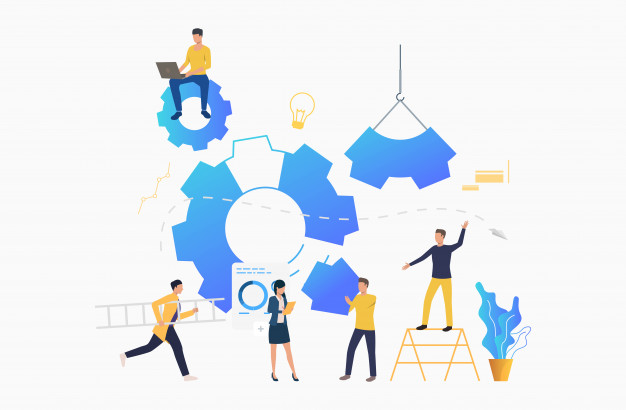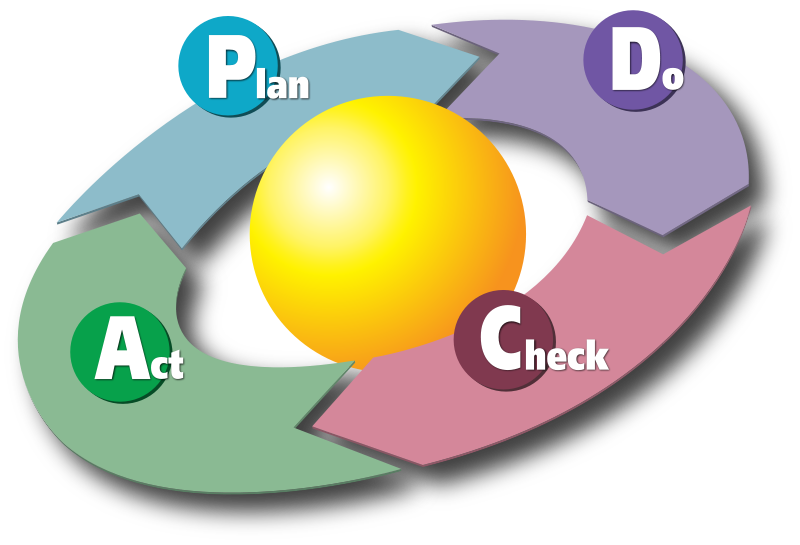Want to know about the Kaizen method and how it can help you take your business to the next level? Then read on to see how this powerful yet simple concept can help you.
One of the things that makes life interesting and worthwhile is the motivation to be better than you were the day before. By continually improving every aspect of our lives – be it personal or professional, we strive forward to be the best versions of ourselves.
Businesses should operate with the same theme in mind. Each and every day the business should desire to be better, produce a better-quality product, deliver faster, generate more users, drive more traffic, increase social media followers, and ultimately provide the best experience to their customers.

After reading this article, check out some additional content about Kaizen in this podcast below.
A Brief History of Kaizen
Kaizen comes from two Japanese words: Kai (improvement) and Zen (good), which roughly translates to “continuous improvement.”
In the business world, Kaizen refers to activities that continually improve all functions and involve all employees from the CEO to the assembly line workers.
The technique of Kaizen (along with several other management techniques) was the result of several American management consultants working with Japanese companies.
Since Kaizen involves small steps and incremental changes, it is a low-risk and inexpensive approach to change and continuous improvement. As a result, Kaizen encourages workers to experiment and try out new ideas without the fear of losing out on large capital investments.
The 10 Principles of Kaizen
There are a few basic principles that anyone implementing Kaizen should adhere to. These are:
- Let go of assumptions.
- Be proactive.
- Challenge the status quo.
- Let go of perfectionism and take an attitude of iterative, adaptive change.
- Look for solutions.
- Create an environment in which everyone feels empowered to contribute.
- Don’t accept the obvious issue; instead, ask “why” five times to get to the root cause.
- Involve multiple people in the process and ask for their opinions.
- Use creativity to find low-cost, small improvements.
- Never stop improving.
Why you Must Implement Kaizen
By properly implementing Kaizen at your workplace, you can achieve positive results in all aspects of the business.
Kaizen is not just about process improvement or waste removal, it’s a managerial mindset that involves every worker in the organization, trying their best to commit to one small improvement on a daily basis. Because of this, there are many advantages to implementing Kaizen at your organization.
1. Increases Teamwork
As mentioned before, implementing Kaizen methodology is not supposed to be a one-person job. Every person in the organization, from line workers to the CEO – everyone is involved in trying to find out small errors and gradually improving the processes. This leads to improved teamwork amongst the members of the organization.

2. Utilization of Resources
Kaizen is all about the utilization of existing resources to make incremental changes. Kaizen doesn’t promote huge capital investments or massive changes to a process. Instead, it focuses on using the best resource any company can have, its employees, and encourages them to look for waste and shortcomings.
3. Increased Employee Moral
When you regularly involve employees in the process improvement process, you respect their opinions, ask for feedback and suggestions, and encourage new ideas for improvement. This, in turn, makes employees feel valuable, gives them a sense of purpose, and hence, leads to increased employee morale and engagement.
4. Increased Efficiency
Careful observation of business processes leads to finding out waste and inefficiencies. Thus, Kaizen methodology’s main goal is to increase the overall efficiency of the process, which in turn, increases employee efficiency an provides a healthy work environment.
5. Fewer Inspections
Since Kaizen involves constant scrutiny of processes, it leads to lesser inspections and regulatory checks. This leads to a safer work environment where employees can thrive and flourish.
How to Implement Kaizen at your Workplace
Now that we know the numerous benefits of Kaizen and its ability to provide gradual change without causing radical changes or heavy capital investments.
Let’s see how your organization can use the power of Kaizen methodology and get on board to the path of continuous improvement. The continuous cycle of Kaizen methodology has seven phases:
1. Educate the Employees
Remember, the implementation of Kaizen involves the collective effort of the organization and not just upper management.
Start off by educating your employees on the concept of Kaizen and how it can help them improve their work as well as life in general. Management plays a key role in training the staff, explaining to them the “why” behind the requirement of new changes, and encouraging them to participate in the program.

2. Identify a Problem or Opportunity
Once employees are on board with the concept of Kaizen, take their valuable opinions on what can be done to improve an existing process or where new opportunities might lie. Create a list of problems and opportunities.
3. Brainstorm Solutions
Once you know what to improve first, it’s time to come up with solutions. Encourage employees to offer solutions. Use quality circles, suggestion boxes, or Kaizen boards to facilitate communication between employees and management.
4. Test the Optimal Solution
Once you decide upon the winning solution, it’s time to roll it out. Start with small steps and implement the solution gradually. Make sure everyone is on board and know why the particular solution was chosen to improve the process.
5. Analyze Results
Create milestones or checkpoints so as to keep tabs on whether the solution is being implemented correctly. Measure how successful the change has been and document the learnings.
6. Standardize the Solution
If the results are what you hoped for, it’s time to standardize the solution company-wide.
One of the most important steps in the Kaizen methodology is making sure that each and every employee participates in the process improvement process.
Kaizen only works when employees at all levels of the company work together proactively to achieve incremental improvements.
The cycle of kaizen activity can also be defined as: “Plan → Do → Check → Act“. This is also known as the Shewhart cycle, Deming cycle, or PDCA cycle.

Advantages of Kaizen
- Improved work efficiency
- It helps scrutinize processes so that mistakes can be minimized
- Requires teamwork
- Since mistakes are minimized, fewer resources can be spent in inspections
- Improves employee morale
- Encourages critical thinking
Disadvantages of Kaizen
- Training employees on a new management style can be a bit of a challenge
- It’s not easy to change people’s mindset
- if desired results are not visible, employees can get discouraged
In Summary…
The primary goal of Kaizen is continuous improvement. As businesses continue to evolve in this digital age, change is usually brought about abruptly.
Implementing Kaizen gives your organization the much-needed focus on things that actually matter and make changes at a pace everyone is comfortable with.
The most important part of implementing Kaizen is usually the development of the Kaizen mindset. The employees should be made aware of why they are doing the work they are doing and how continually looking for ways to improve can help them achieve more.
Thus, providing your teams with the proper Kaizen training tools and the ecosystem where they can freely scrutinize wastage or errors and suggest new, creative ideas forms the foundation of change management.
As your employees become aware of the benefits of Kaizen in their personal as well as professional lives, they will likely begin taking mental ownership of their individual processes. And when this shift in mindset occurs, the employees themselves look for ways to improve their work.




